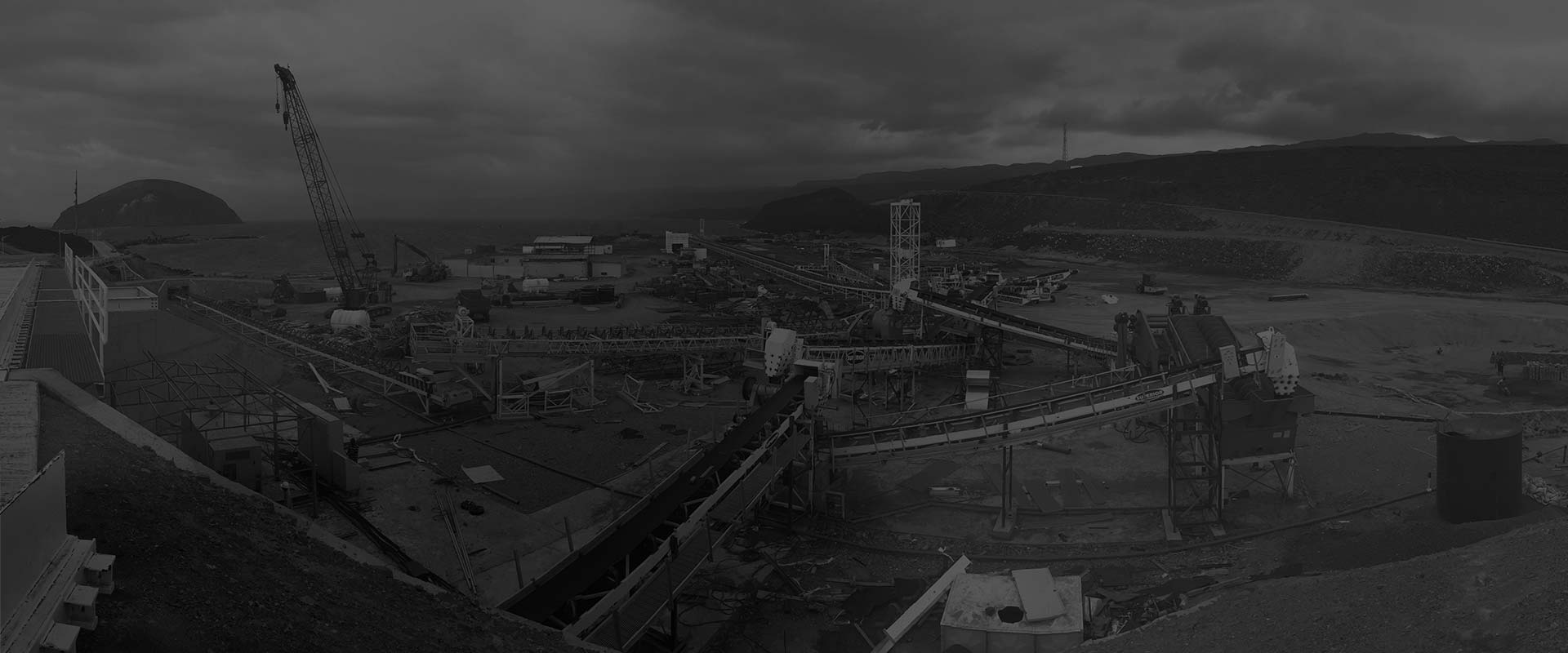0086-379-64087240
CIC has a perfect and powerful alignment and measurement team to meet customers' various requirements, whether you are to replace the whole equipment, to update and modification of spare parts, or need to carry out the professional measurement for the equipment before delivery, we all have the corresponding qualifications and matching alignment and measurement tools to meet your requirements.
CIC's alignment service helps you to keep the rotating kiln healthy and operating at peak performance. We provide end-to-end service for rotary kiln design and full pyro processing systems. With more than 60 years of experience covering a wide range of applications and business areas, CIC rotary kiln manufacturer can count on our technology to keep your kiln running.
Alignment of kiln
Untimely treatment, horizontal and vertical misalignment issues on rotary kilns can lead to unpredictable operation and decreased reliability. Alignment is also a key factor in extending the lifetime of equipment and optimizing maintenance costs.
The design of the rotary kiln shell plays a crucial role in the overall performance and longevity of the kiln. The shell of the rotary kiln is a cylindrical structure that provides support and containment for the materials being processed. Here are some key considerations in rotary kiln shell design:
1. Material Selection: The selection of materials for the kiln shell is essential to ensure its durability and resistance to high temperatures, thermal shocks, and chemical reactions. Common materials used in rotary kiln shell construction include carbon steel, stainless steel, and refractory bricks. The choice of material depends on the specific requirements of the process and the properties of the materials being processed.
2. Shell Thickness: The thickness of the rotary kiln shell is determined based on various factors, including the size of the kiln, the operating temperature, and the mechanical load. Thicker shells are generally used for larger kilns or higher-temperature processes to provide sufficient strength and heat resistance. Finite element analysis (FEA) and stress calculations are often employed to determine the optimal thickness for the specific operating conditions.
3. Shell End Design: The design of the kiln shell ends is crucial, as these areas experience high thermal and mechanical stresses. Special attention is given to the design and construction of the kiln shell ends to ensure proper support and reinforcement. This may include the use of thicker plates or additional stiffeners to enhance structural integrity.
4. Kiln Shell Support: Effective support is vital to prevent any deformation or warping of the kiln shell during operation. Support mechanisms, such as support rollers and thrust rollers, are used to maintain proper alignment and distribute the load evenly. The design of these support structures is critical to ensure smooth rotation and minimize wear on the kiln shell.
5. Expansion Joints: Rotary kilns experience thermal expansion and contraction, necessitating the incorporation of expansion joints in the shell design. Expansion joints allow for movement and reduce stress build-up, preventing potential structural failures. These joints are typically implemented at specific intervals along the kiln shell.
6. Insulation and Lining: Insulation and lining are essential elements in the rotary kiln shell design to reduce heat loss, minimize thermal stresses, and protect the shell from chemical corrosion. Insulating materials and refractory linings are installed on the inner surface of the shell to create a barrier between the hot gases inside the kiln and the shell itself.
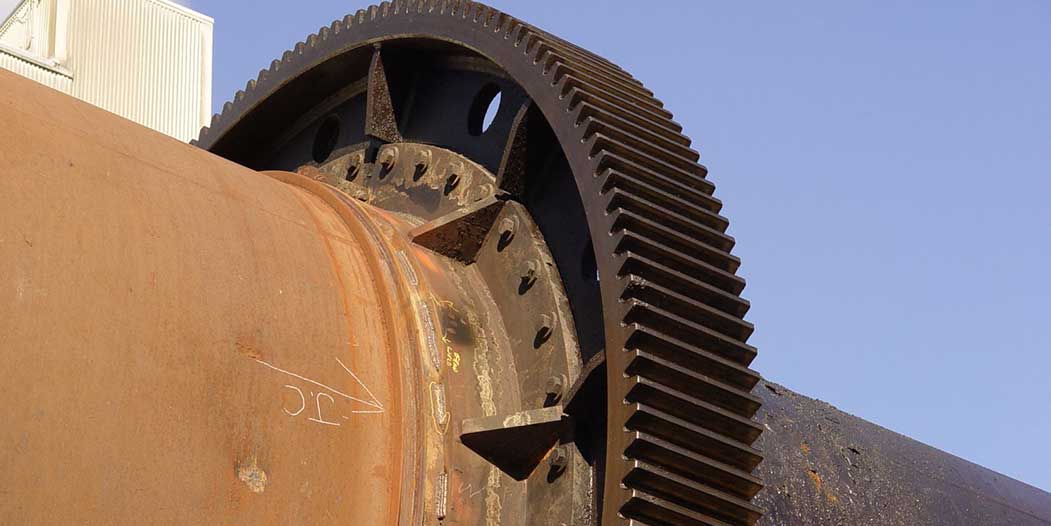
Why Alignment is So Important
Alignment of the shell or drum between the support piers, kiln girth gear to pinion, and tires to support roller, is necessary for all rotary units. By maintaining alignment of the key components, the following benefits can be obtained:
Equalization or optimization of loads on support piers.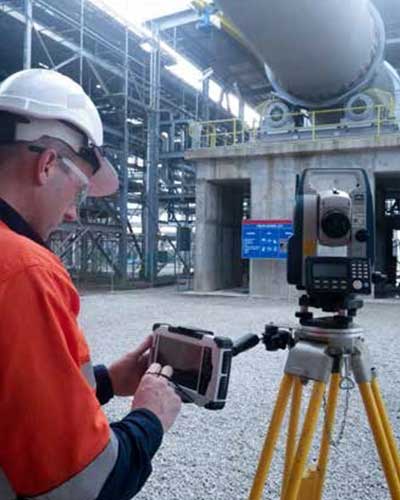
Reduced power consumption.
Lower component wear rates, e.g. riding rings, support rollers, gear and pinion, thrust roller, bearings, etc.
Reduced stress and wear on refractory.
Reduced risk of shell damage by refractory failure.
Reduced risk of unplanned stoppage.
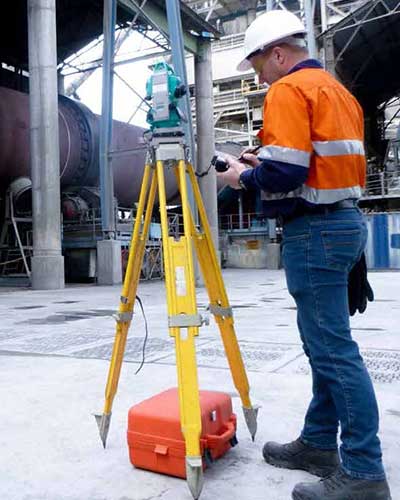
The use of accurate and proven procedures, performed by experienced and qualified personnel should be of paramount importance to the operator. CIC has crews with many hundreds of hours of experience on all makes and types of rotary equipment.
We can use the proper diagnostics tools and methods. For example, we rely on measurements of the riding ring and the associated tire slip or creep. However, given that the rotary kiln tyre surface can be irregular due to wear and is often contaminated with lubricant and dust, basing kiln alignment on tire measurements alone is of questionable accuracy. We use state-of-the-art high-frequency laser equipment to capture data with a high degree of accuracy, calculating the position of the kiln shell rotational axis at each support. Calculations include allowance for flexure, shape distortion and eccentricity of the shell.
CIC industrial grinding mills undergo rigorous alignment and measurements before leaving the factory, such as the elongation of the end cover joint bolts, the length of the shell, the hole diameter of the shell, and the hole depth of the end cover. Under the special requirements of customers, we will also carry out a laser coaxiality test of the mill.
Reference: How to Measure the Quality of Ball Mill Grinding Process?
Causes & Counter Measures of Gear Wear of Ball Mill Mining
How to Measure the Quality of Ore Grinding Process in Ball Mills?
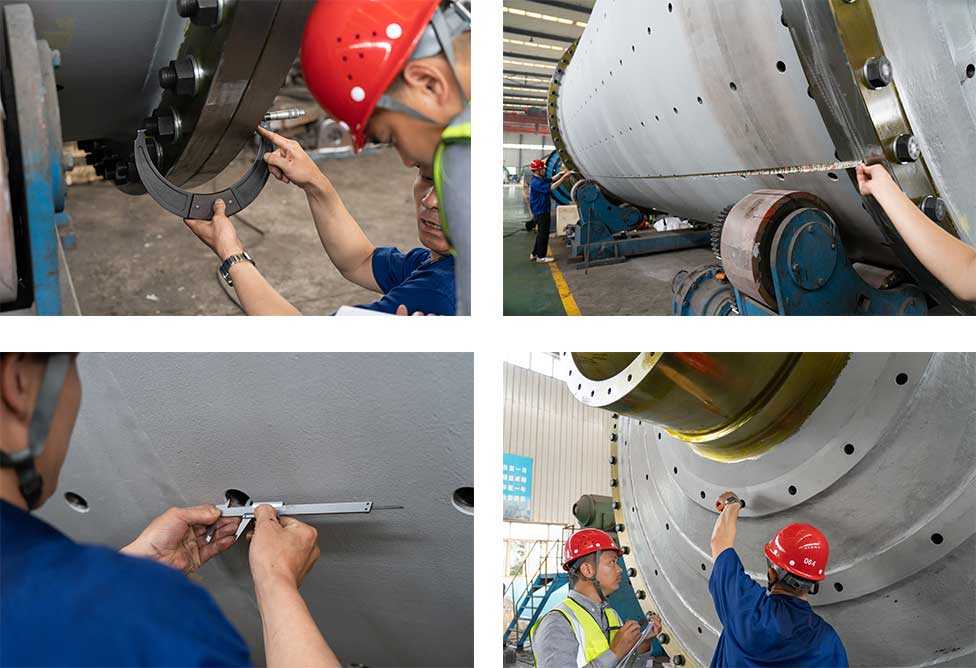
In the production and operation of the grinding mill design, it is necessary to control the machining and installation accuracy, especially during the operation of the mill, it is necessary to carry out "physical examination" on the running condition of the mill regularly, mainly to measure the coaxiality and level difference of the bearing parts at both ends of the mill.
![]()
Measurement distance range.
Horizontal deflection yaw and pitch ±320º.
Vertical direction yaw and pitch +80º/-60º.
Angular resolution ±0.07″.
Range resolution 1µm.
Absolute accuracy.
Static state ±5ppm(2sigma).
Dynamic state ±10ppm(2sigma).
Coordinate repeatability: Better than 2.5ppm.
Scope of application: temperature 2-40℃, atmospheric pressure 580~800mmHg.
Relative humidity: 10%~92.5%, within 2km above sea level.
The alignment error of bearing coaxiality is required to be less than the specified value.
For different specifications of ball mill types, the horizontal height error of bearing parts at both ends is required to be less than the specified value.
The alignment space is limited, it is necessary to complete the precise alignment of the ball mill design in the limited space.
CIC test the coaxiality of the semi autogenous mill(Φ5.5X3.6m)produced for Russian customers in own factory by CIC SAG mill design:
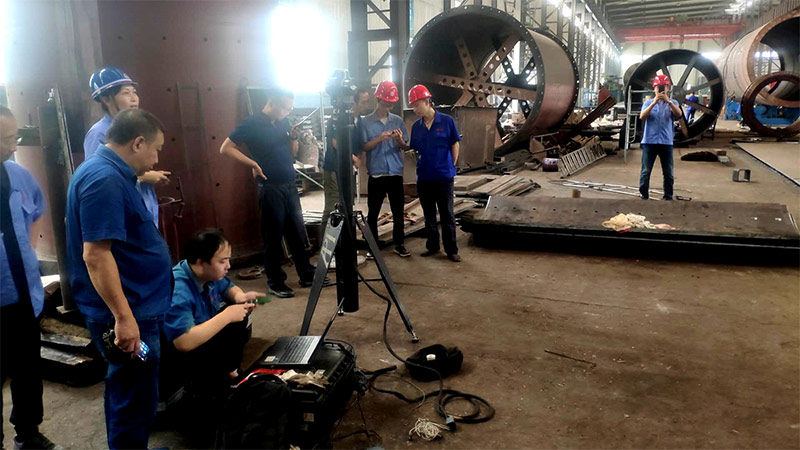
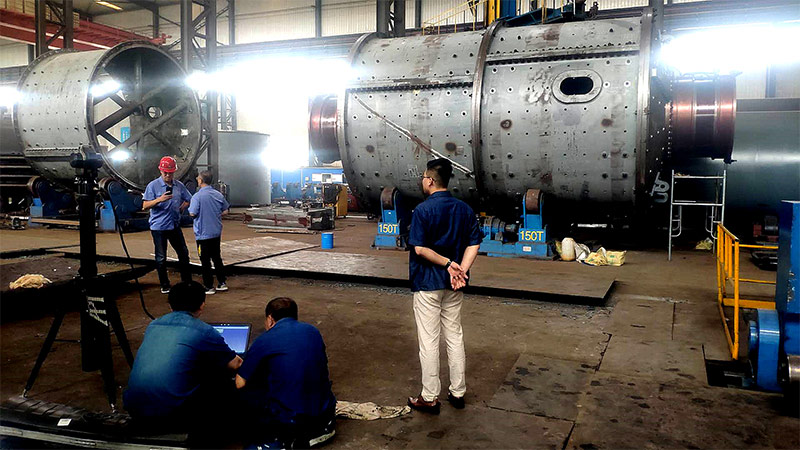
Coaxiality of the Semi Autogenous Mill
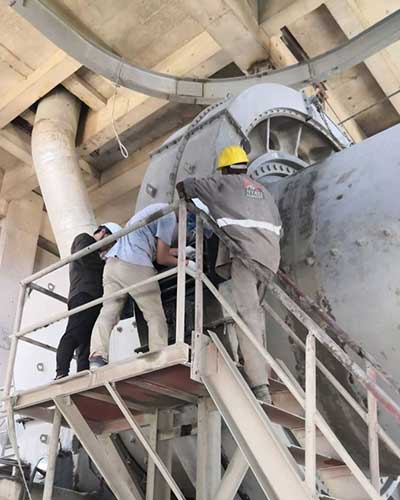 The surveyor of the CIC can go to the customer's site for field measurement; We can survey the transformation of the equipment in use or the corollary equipment of the new project, so as to provide technical support for the subsequent cost accounting and quotation. CIC focuses on customized services for customers' requirements of products. Equipment transformation and renewal require comprehensive measurement and analysis of the original equipment, as well as design and manufacture, are carried out on this basis, such as the replacement of the rotary kiln girth gear on the grinding machine and the replacement of the rotary kiln tyre.
The surveyor of the CIC can go to the customer's site for field measurement; We can survey the transformation of the equipment in use or the corollary equipment of the new project, so as to provide technical support for the subsequent cost accounting and quotation. CIC focuses on customized services for customers' requirements of products. Equipment transformation and renewal require comprehensive measurement and analysis of the original equipment, as well as design and manufacture, are carried out on this basis, such as the replacement of the rotary kiln girth gear on the grinding machine and the replacement of the rotary kiln tyre.
In addition to on-site measurement, CIC will also use professional measuring equipment to control the quality of products according to customer requirements or its own quality requirements. We could cooperate with manufacturing or maintenance departments to carry out product inspection in the factory or user site, providing reliable data support for the installation and commissioning of products, so as to better serve customers. CIC skilled quality inspection engineers can use the most advanced laser tracking system to perform ball mill calibration and other tasks.
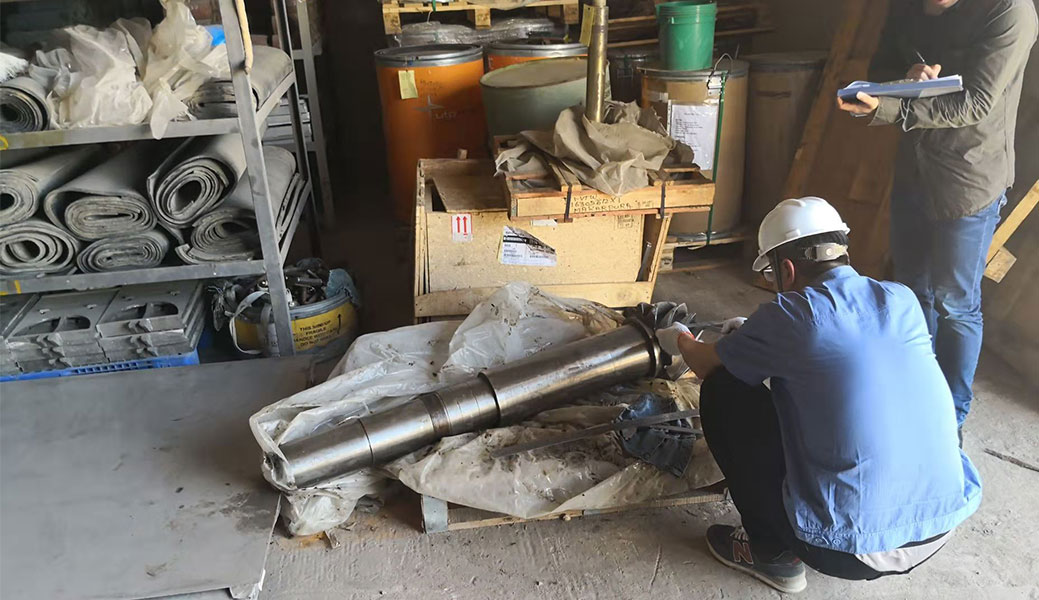
On-site Measurement of Pinion Shaft

CIC Surveyors Make On-site Measurements of Φ3.6x15m Cement Mill Liner in Tanzania
CIC has the unique mill liner design and research experience on grinding mill liners, we can optimize and replace the liners used by customers. On-site measurement can be carried out and the situation of liners in use be investigated by our professional engineer, and provide more accurate and more suitable update services on the basis of on-site measurement data.
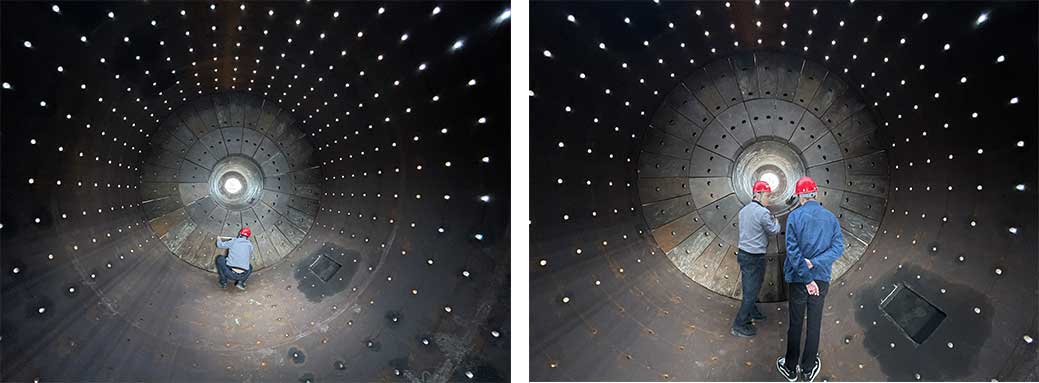
On-site Measurement for Rod Mill Liner
